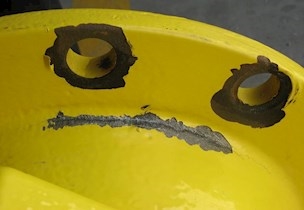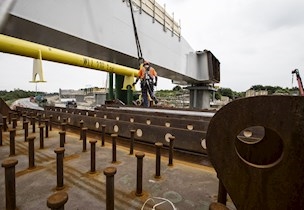Pressure equipment - Manufacture, application and inspection
It is important that your pressure equipment meets all current requirements, in order not to harm or injure the staff and the surroundings.
Regulations for the safety of pressure equipment
Pressure equipment is considered as dangerous technical facilities, for which the safety is determined by:- Design - construction and manufacture
- Installation, attendance and maintenance
- Safety and control equipment
- The physical state (in good condition)
- Control – conformity assessment, inspection and periodic/other examinations etc.
The danger of pressure equipment is primarily caused by the confined energy. Steam boilers operate at overpressure resulting in overheating of the water in the boiler. Liberation of overheated water – through leakage and bursting – can prove fatal to any personnel in the boiler room.
It is even worse if the boiler vessel bursts and parts and pieces cause additional casualties and great damage to the surroundings.
Some of the damage that may occur by applying pressure equipment is rooted in e.g.:- Inappropriate construction and manufacture – of new equipment as well as alteration and repair
- Attendance and maintenance
- Degradation processes
- Control.
As to safety and health as well as considering legal aspects, it is therefore crucial that manufacturers, owners and users are constantly up-dated on the requirements for their pressure equipment. This applies to both new and already deployed pressure equipment.
Requirements and rules for your pressure equipment
Today, the Danish Working Environment Service is the supreme authority for pressure equipment in Denmark. All pressure equipment that holds or may develop pressures above 0.5 bar overpressure and portable pressure equipment are subject to special requirements for construction and manufacture before commissioning for alteration and repair.
As a starting point, the manufacturer or the owner/user must take care to ensure or supervise that the requirements are met. Depending on the classification of the equipment as regards dangerousness (type, pressure, temperature, volume/nominal diameter, content and thus contained energy), the control may also require involvement of an independent third party body.
Who can supervise that your pressure equipment is safe?
As an independent third party certification and notified body, FORCE Certification A/S may assist you in assessing whether your pressure equipment can be justified as to safety and health, as well as in ensuring that requirements and rules for design/installation and use are met.Our professionally extensively composed staff holds many years of experience with control and supervision (inspection) of all types of pressure equipment based on the current requirements and rules.
FORCE Certification A/S is an accredited inspection body, type A according to DS/EN ISO 17020, cf. DANAK Reg. Nr. 9057.
Based on this accreditation, FORCE Certification A/S has been appointed notified body identification number 0200 (PED, SPVD and TPED) by the Danish Working Environment Service.
FORCE Certification A/S carries out tasks such as:
- Approval body for design/installation, alteration and repair tasks
- Inspection body at installation control, periodic examinations, operational capability and lifetime examinations as well as conformity assessment of the requirements for operation of steam boilers without constant monitoring
- Conformity assessments.
Background for legislation on pressure equipment
The development of pressure equipment followed in the aftermath of the nineteenth century’s fast growing industrialisation. The need for steam for production of mechanical power and motion formed the basis of the development of steam boilers for supply of energy for steam engines.As the need for steam at that time often exceeded the capacity to produce and attend to the steam boilers and steam engines in a responsible manner, serious accidents and boiler explosions could not be avoided, resulting in a great number of deaths and great material damage and entailed costs.
To prevent the many accidents and boiler explosions, the need for specific rules for manufacture and application of steam boilers and steam engines was quickly recognised, so that the public and users could have the necessary confidence in the equipment and were not exposed to unnecessary danger. These early rules also imposed legal obligations on owner and user – in other words, you could be legally punished if you did not abide by the rules.
Previous rules in Denmark:
- 1832: Steam engines must be examined by specialists
- 1851: Act on examination of steam (boilers, engines, ships)
- 1875: The Danish Working Environment Service initiates control of steam boilers and control of accidents
- 1896: Act on boiler attendants.
Services

Materials selection and corrosion protection
The correct materials and optimal corrosion protection gives your product a longer service life.

Failure and damage investigation
Determine the cause of failure and prevent it from reoccuring.

Welding inspection
Inspection of the welding work is crucial in order to obtain the proper quality.


